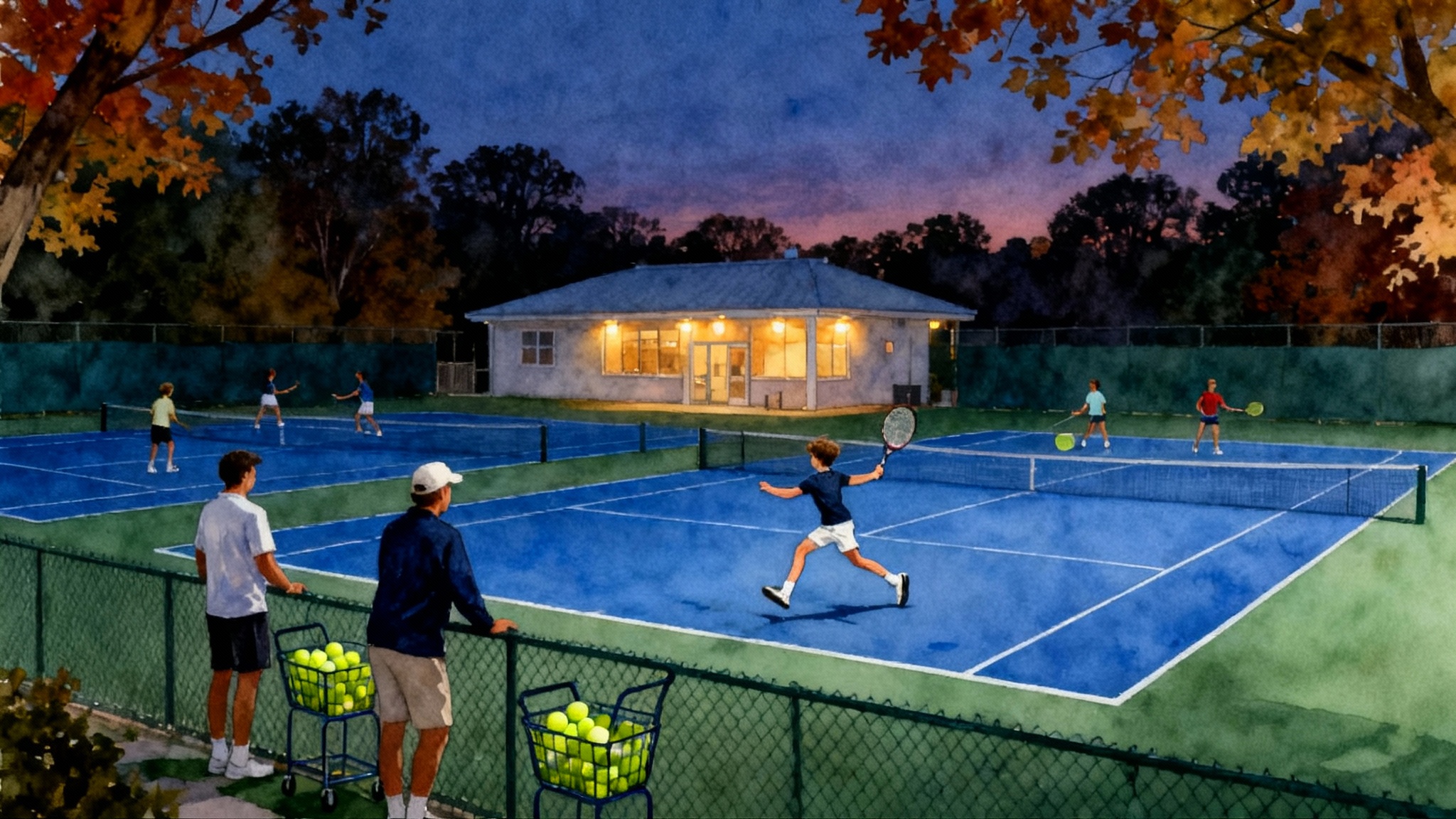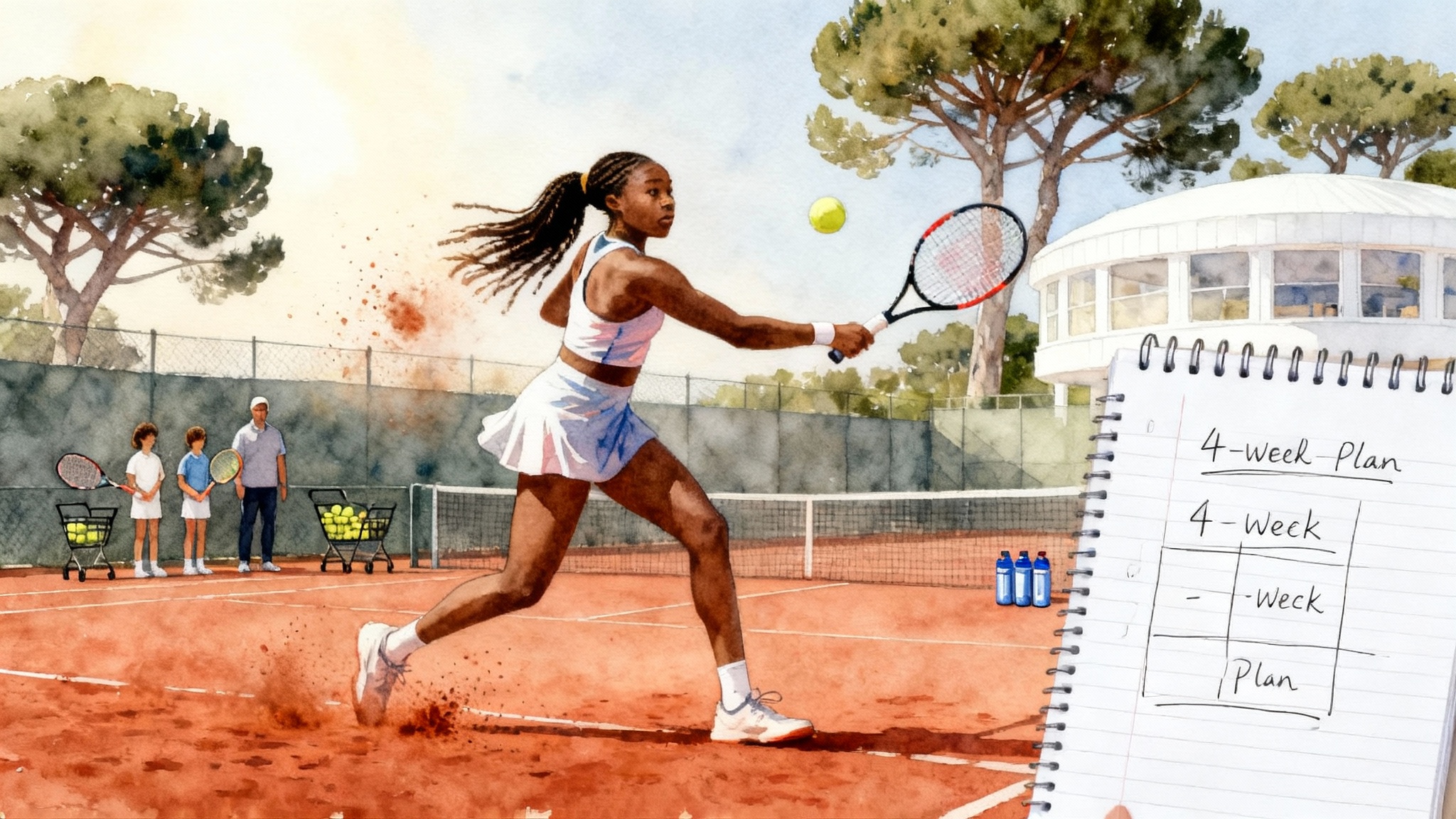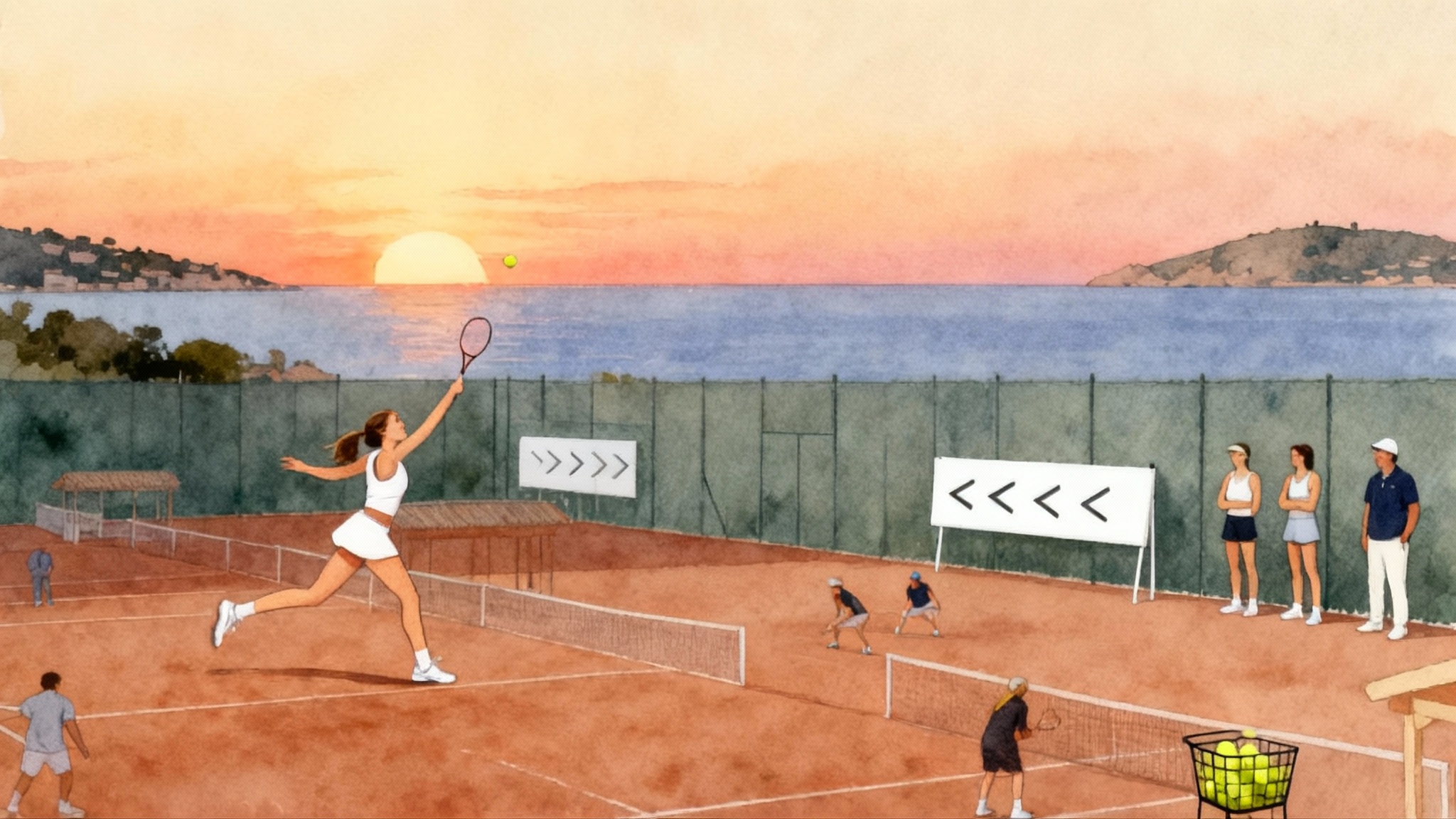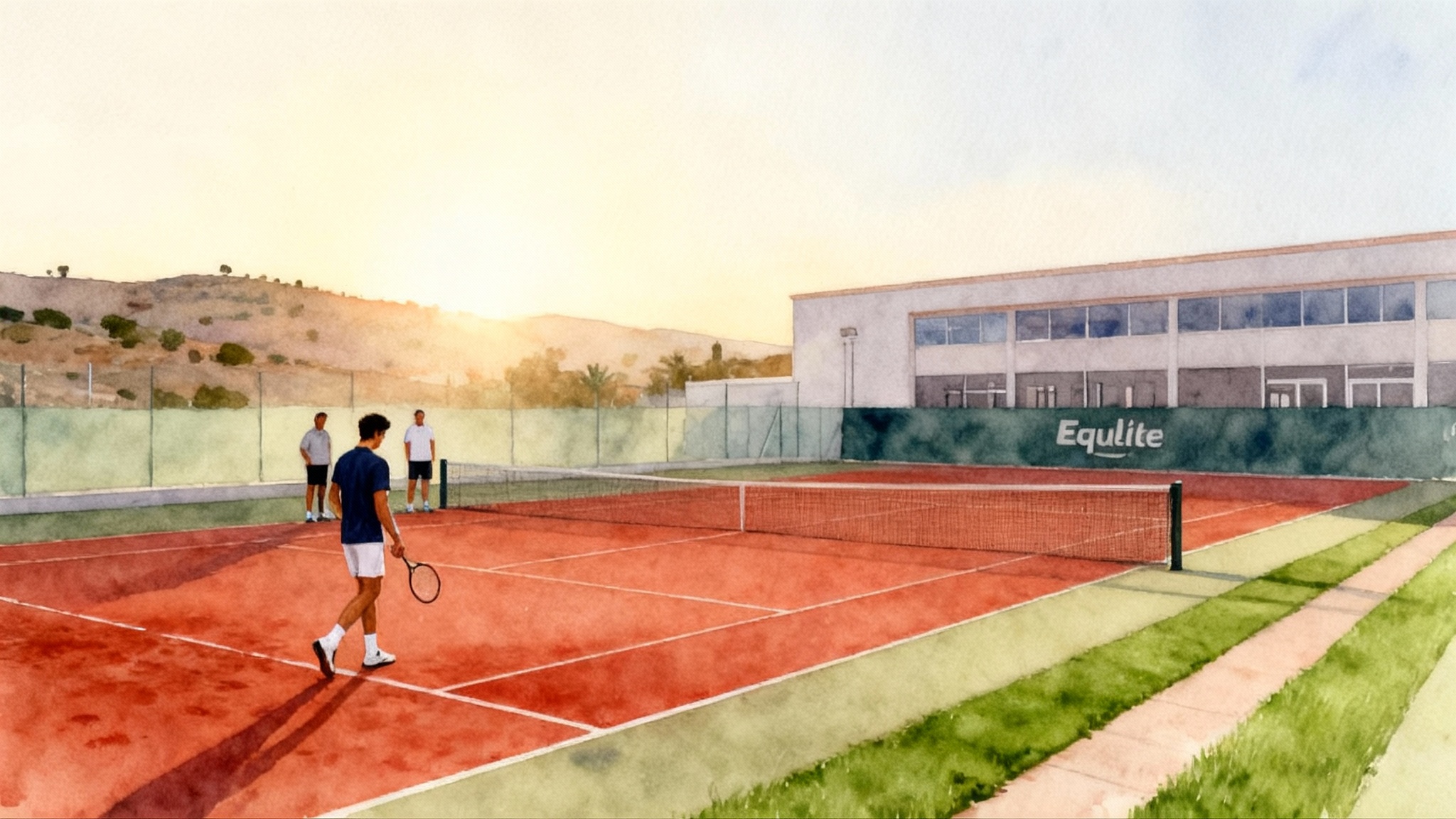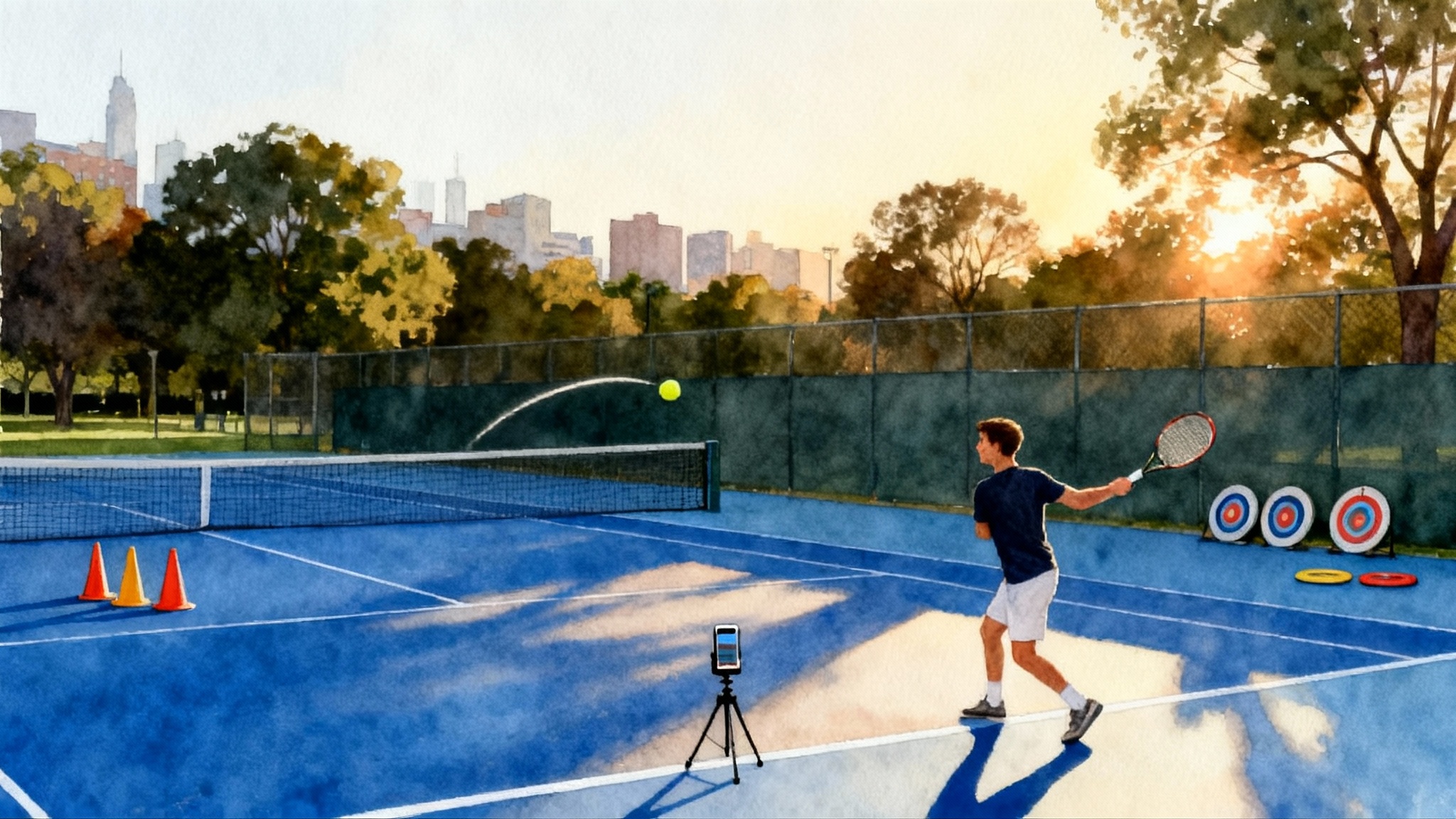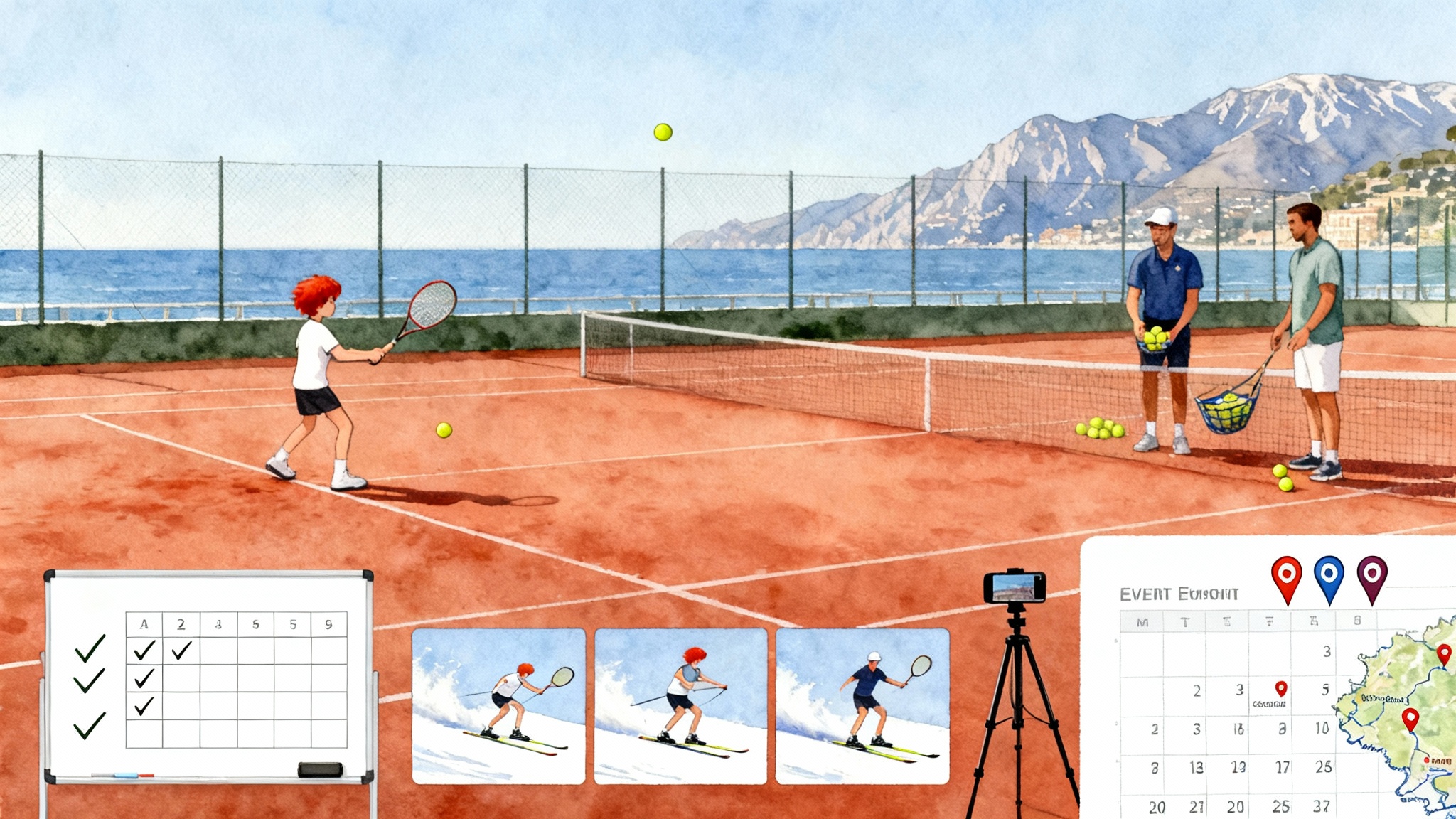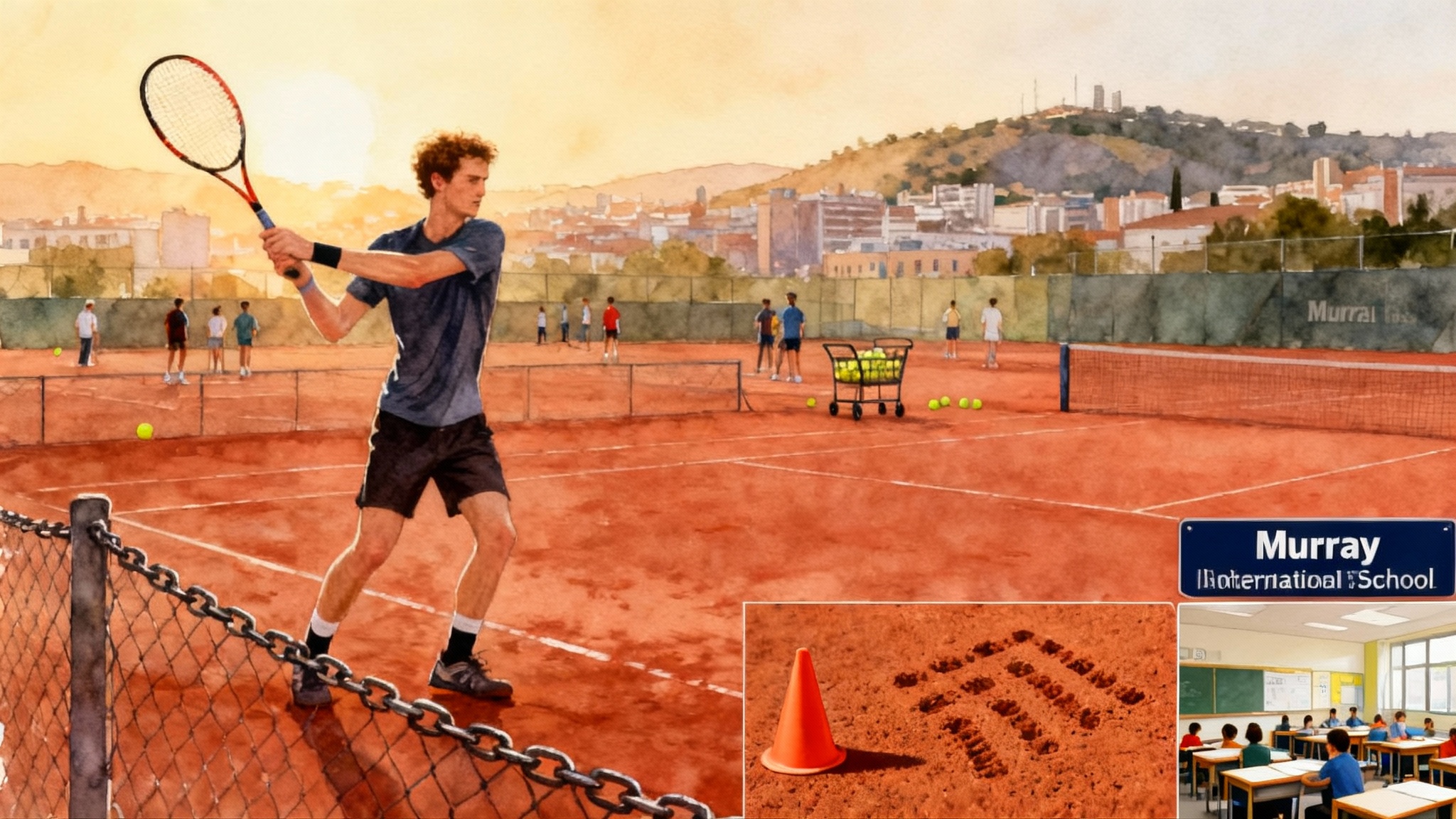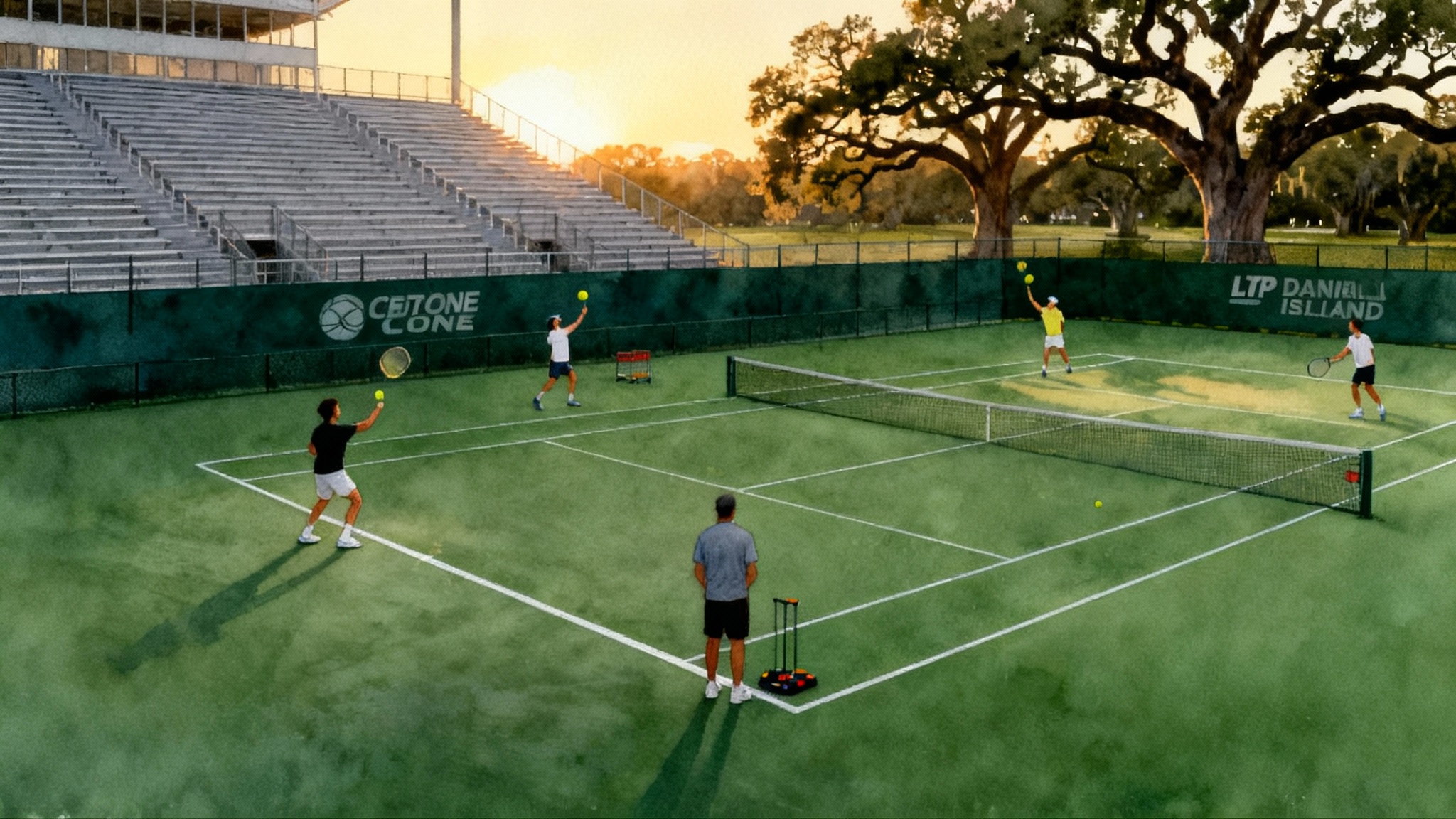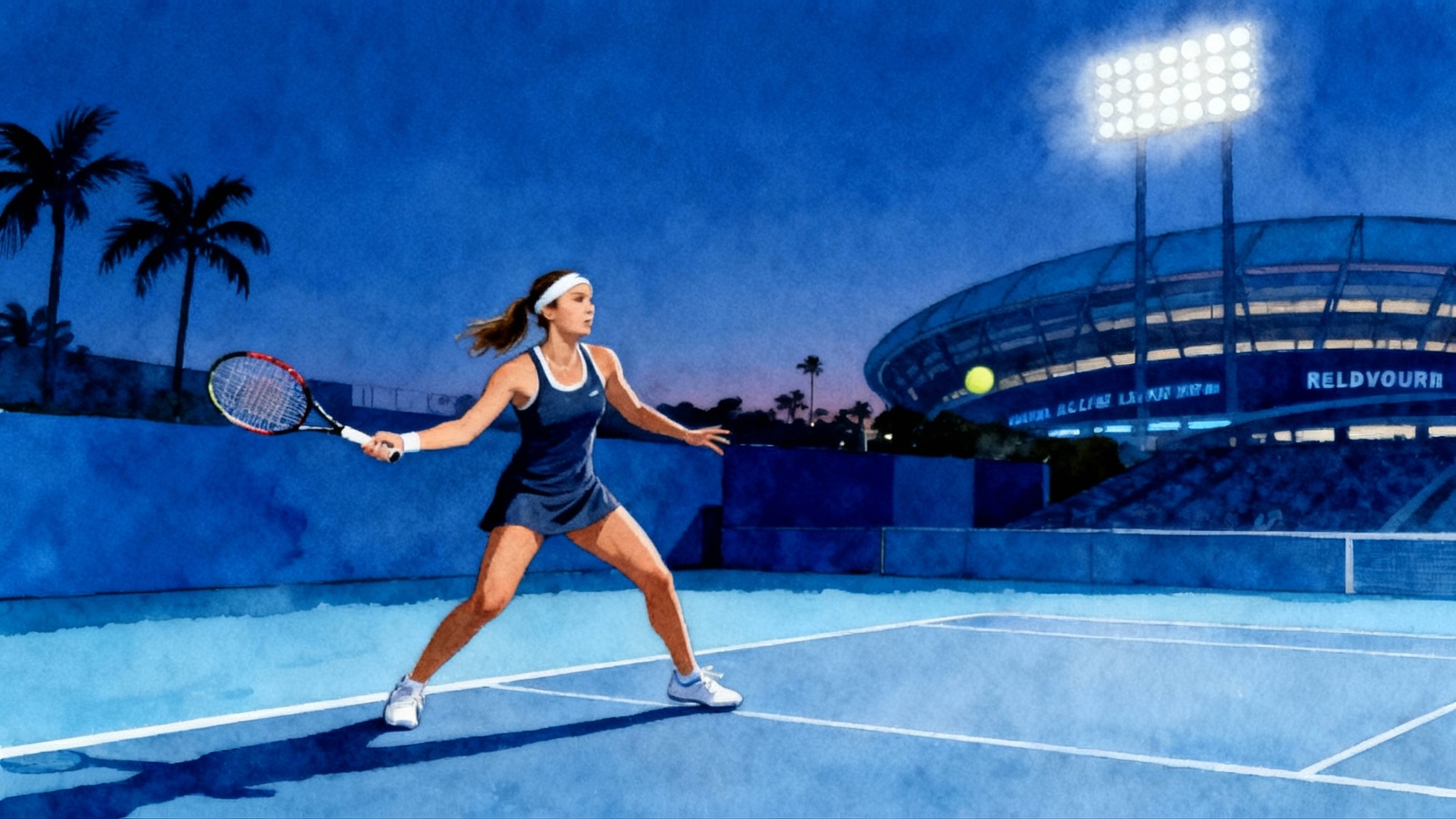Oslo to Manacor: How Rafa Nadal Academy Shaped Casper Ruud
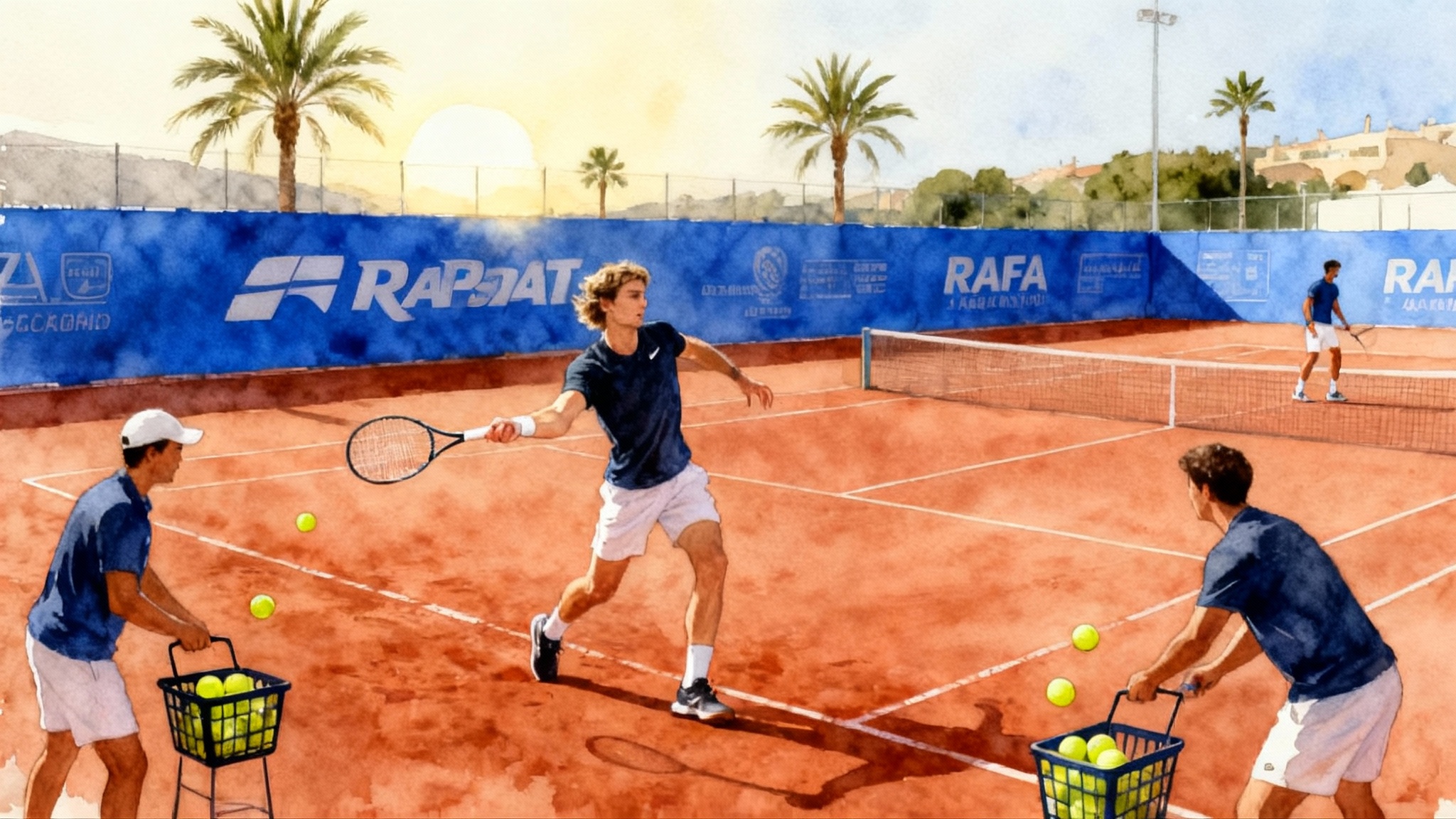
A decision in 2018: from Oslo winters to Manacor clay
In 2018, a 19-year-old Casper Ruud left the rhythms of Oslo for the red clay and salt air of Manacor. He did not abandon his roots or his father-coach, Christian Ruud. He layered a targeted environment on top of an already solid foundation. That choice mattered because it added something home training rarely can: a repeatable, high-density workload against world-class hitters, overseen by a staff that builds every hour around the demands of the pro tour. At the center was the Rafa Nadal Academy program, a system that prizes intensity, discipline, and clarity under pressure.
Parents often ask when an academy becomes more than a postcard campus. The Ruud story offers an answer. It becomes essential when the athlete has the basics, has the buy-in at home, but needs an accelerant. Ruud used Manacor as that accelerant.
Why Manacor, and why it works
Mallorca gave Ruud three things Oslo could not provide year-round.
-
Weather and surfaces: reliable outdoor hours on clay, plus immediate access to adjacent hard courts for transitions. That meant more live reps on the surface that would define his brand.
-
A deep hitting bench: daily practices with top 100 and top 200 players, including academy pros and frequent visitors, so the average ball in practice was closer to a tour ball. In junior or local settings, the average ball is often too slow, too short, or too safe. In Manacor, the average ball bites.
-
A culture of honest volume: the academy’s signature multi-ball sequences and long live-ball sets create a workload that is both physically heavy and technically strict. Mis-hit a ball and the next feed is already on its way; there is no time to admire mistakes.
For parallels on academy-driven development, see our breakdowns on How Equelite built Alcaraz and Piatti Academy shaped Sinner.
The training that travels: high-intensity multi-ball
If you watch Ruud train in Manacor, you notice the rhythm before the results. Coaches stand with baskets, two at a time. The drill might run in 45- to 75-second bursts with a 20- to 30-second reset. The goal is not theatrics. The goal is quality repetitions under oxygen debt.
A typical clay block could include:
- Two-on-one corner pressure: coach feeds crosscourt heavies to Ruud’s backhand, then a surprise short ball. Ruud must defend deep crosscourt, defend down the line, then sprint and finish with a forehand into the opposite corner. Ten balls, reset, repeat.
- Inside-out ladder: three crosscourt forehands that clear the net three balls high and land deep, one inside-in strike to the line, recover, then a forehand plus-one to the open court. The ball count is tracked; the depth is tracked; the miss location is tracked.
- Backhand stability sets: five neutral rallies at 60 to 65 percent pace, then one acceleration down the line that must land past the service line. The objective is to rehearse patience, then change.
Multi-ball does not replace live points. It compresses key patterns so they show up faster once points begin. For Ruud, that translated into sharper first-ball forehands after serve, a deeper average rally ball, and a backhand that stayed heavier under pressure. Those gains show up as consistency, but the mechanism is simple: more precise balls, more often, under fatigue.
Sparring with Nadal: lessons only a champion can teach
Occasional sessions with Rafael Nadal gave Ruud a living reference standard. The takeaways were not mystical. They were measurable.
- Height over the net: Nadal’s heavy forehand lives above the tape, then dives late. Training next to that ball flight made Ruud commit to an extra half meter of net clearance when rallying crosscourt on clay.
- Court position under stress: Nadal’s default clay position is a meter or two behind the baseline, but he reclaims ground on short balls. Ruud began to mirror that discipline, which reduced the number of balls he hit off the back foot.
- First four balls of the rally: Nadal’s patterns make ball one and two count. Ruud’s serve plus-one improved not just in speed but in decision quality. He chose the right ball to accelerate more often.
A spar with a legend is not a shortcut. It is feedback at maximum resolution. Once you have felt a truly heavy rally, your internal calibration shifts. Ruud took that calibration into his own blocks and made it his normal.
Two pillars, one message: father-coach plus academy
Christian Ruud did not exit the picture when Casper moved. He clarified roles. Day to day, the academy handled volume, structure, and hitting depth. Christian handled career strategy, schedule, and how a given week fit the bigger arc.
That two-pillar setup solved three problems that sabotage many families:
- Communication gaps: the academy staff and father-coach shared language. They used drill names, intensity zones, and session objectives that matched. A Tuesday block in Manacor aligned with a Friday match in Lyon because everyone agreed on the theme.
- Emotional load: parents can carry love and standards without carrying the entire training ecosystem. The academy can be bad cop on Tuesday and data partner on Wednesday, so the car ride home stays human.
- Continuity: travel weeks felt like extensions of Manacor, not departures from it. Ruud’s team could re-create the same three key drills anywhere with a basket and two feeders.
From rankings to results: the climb mapped
The timeline looks clean only in hindsight, yet the trend is unmistakable. Ruud spent 2018 outside the top 100, flirted with big breakthroughs in 2019, broke through with his first tour title in early 2020, consolidated in 2021 with multiple trophies, then reached two major finals in 2022 and peaked at world number two that September. The curve is documented on his Casper Ruud career overview, which shows a steady upward slope through those seasons.
What matters for parents is the linkage between process and outcomes:
- 2018 to 2019: skill consolidation. He logged thousands of heavy, high-clearance forehands, stabilized the backhand, and normalized long rallies against elite pace.
- 2020: first title and top-30 arrival. That validated the idea that repetition quality, not novelty, moves ranking.
- 2021: a cluster of titles, three of them on summer clay. That cluster tells you that compounding works when the calendar is built around your identity.
- 2022: finals in Paris and New York, plus the title match at the year-end tour finals. That season confirmed that a clay-anchored game can travel to hard courts if you control height, depth, and first-strike choices.
Clay-court consistency, explained without magic
Fans say Ruud is a clay guy. The better description is that clay exposed the improvements he earned in Manacor.
- Shot tolerance: his average rally ball on clay clears the net higher and lands deeper. That forces opponents to hit up on contact, which protects his court position.
- Forehand geometry: Ruud can hit the heavy crosscourt that pins a right-hander’s backhand, then step around for inside-out or inside-in. That pattern was rehearsed hundreds of times per week in multi-ball and then in live points.
- Backhand reliability: the academy’s backhand sets reduced the collapse rate late in sets. On clay, where one short ball can flip a rally, this reliability is currency.
- Serve location over speed: instead of chasing highlight velocity, Ruud’s team emphasizes hitting targets that set up the forehand. The plus-one ball wins the point; the serve starts the script.
These are not glamorous tweaks. They are hinges that turn matches. When parents hear consistency, they should think controllable height and depth under fatigue.
Why this model still matters in 2025
Tennis in 2025 is faster, deeper, and more global. The thresholds for top 20 and top 10 are thinner than ever. In that world, the extra 10 to 20 percent you gain from a targeted academy can be decisive. Ruud remains relevant because his competitive identity scales. He knows exactly who he is on clay, he has a repeatable plan on hard courts, and his team can recreate the Manacor workload anywhere with a basket and intent.
The larger lesson is that relevance is a system, not a moment. Ruud’s system ties environment, training density, and coaching roles into a weekly microcycle. That is what parents can borrow.
A practical model for parents: when an academy adds the crucial 10 to 20 percent
Ask three questions before you commit to an academy.
-
Is the athlete already consistent at home? An academy magnifies existing habits. If basic grips, contact points, and fitness are unstable, the first investment is local fundamentals, not a flight.
-
Will the average practice ball be harder than at home? If you can get high-end hitting partners locally, the academy’s marginal value shrinks. If you cannot, the academy’s deep bench may be the unlock.
-
Can you define the missing 10 to 20 percent? For Ruud it was not a mystery. He needed heavier rally balls, more precise patterns under fatigue, and repeated exposure to elite pace. Translate your child’s needs into similar concrete targets.
What to look for once you tour a campus:
- Multi-ball structure: are drills time-bound with clear ball counts and objectives, or open-ended and vague? The former creates the Manacor effect.
- Live-ball honesty: are sets played at match intensity with limited coaching interruptions? The best academies let players solve problems in real time, then debrief.
- Hitting ladder: ask who will hit with your child on day three, day seven, and day fourteen. Names and levels matter more than facilities.
- Coach communication: request a sample session plan. The plan should list themes, drill names, and metrics. If you cannot understand it, you cannot manage it.
- Role clarity with the home coach: the academy should welcome your coach into the loop, not replace them by default. Copy the Ruud two-pillar approach.
A weekly blueprint you can adapt at home
You do not need to live in Manacor to train like it for a week. Here is a simple plan that mirrors the Ruud arc without exotic equipment. For focused pattern work, add our 30-day forehand plan.
-
Monday
- Morning: 3 blocks of two-on-one backhand defense, 10 balls per block, 6 sets. Target height and depth; mark depth with cones a meter inside the baseline.
- Afternoon: 30 minutes of serve targets into deuce and ad corners, then plus-one forehands to the opposite corner. Record make percentages.
-
Tuesday
- Morning: Inside-out ladder on forehand. Three high crosscourts, one inside-in, recover. 8 sets of 8 balls, 30 seconds rest.
- Afternoon: 1 set to 6 games, same side, return games only. Emphasize depth on the second shot of the rally.
-
Wednesday
- Morning: Backhand stability sets. Five neutral, one down the line past the service line. 10 rounds.
- Afternoon: Fitness block. Court sprints with racket, 6 by 20 seconds, 40 seconds rest. Finish with shadow swings that match Monday patterns.
-
Thursday
- Morning: Live points crosscourt only, forehand for both. First to 15 points. Lose two in a row, do a 10-second fast-feet penalty.
- Afternoon: Serve plus-one patterns, left and right. 50 balls each side. Chart depth and direction.
-
Friday
- Morning: Set play. Two sets to 4 games with no-ad scoring to raise pressure density.
- Afternoon: Recovery and film review. Compare one rally string from Monday and Thursday for height and depth.
-
Saturday
- Morning: Pattern choice day. Player calls heavy or drive before each feed. The call must match the ball outcome. This teaches commitment.
- Afternoon: Short-court touch games to keep hands alive. 3 by 7 minutes.
-
Sunday
- Off or light mobility. Log the week, then identify one pattern to build next week.
Track three numbers every week: first-serve plus-one forehand success rate, average rally ball depth past the service line, and break-point conversion in practice sets. If they move, the game moves.
Budgeting and travel without losing the plot
An academy stint is an investment. Learn from Team Ruud’s efficiency.
- Choose windows: two to four targeted weeks per year often beat twelve scattered weeks. Pick a pre-clay or pre-hard block and commit.
- Bring the plan home: film one session with the academy coach explaining the key drills. Recreate those sessions locally between visits.
- Keep roles clear: decide who sets schedules, who reports results, and how often you meet. Written roles prevent mixed messages to the player.
Common red flags that waste money
- Endless variety without theme: if every day is a new drill circus, the athlete learns novelty, not mastery.
- Facilities over hitters: a beautiful campus cannot replace a strong hitting bench.
- Vague feedback: if you leave a week with compliments and no numbers, you bought a vacation, not a training block.
What Ruud’s clay identity teaches all surfaces
Ruud’s identity is not a limitation. It is a platform. Heavy topspin crosscourt buys time. Inside-out aggression finishes points. Backhand stability protects scoreboards. Those habits work on clay and translate to hard courts once serve location and court position sharpen. The academy helped him weaponize that platform and keep it stable through long seasons.
When 2025 pressure rises again in Paris, Rome, and the summer hard swing, the players who win will be the ones who can repeat their best patterns when the lungs burn. That is the Ruud lesson. Train the repetitions, then trust them.
Final set: from Oslo to your town
Casper Ruud did not reinvent himself in Manacor. He refined himself. The Rafa Nadal Academy added the missing 10 to 20 percent by raising the average quality of every ball, by compressing key patterns into high-density drills, and by pairing a professional environment with a stable father-coach structure. Parents can borrow that blueprint without chasing a postcard. Define the gaps, find an environment that makes the average ball better, and keep the roles clear. Do that, and the next jump in ranking stops being a wish and starts feeling like math.
